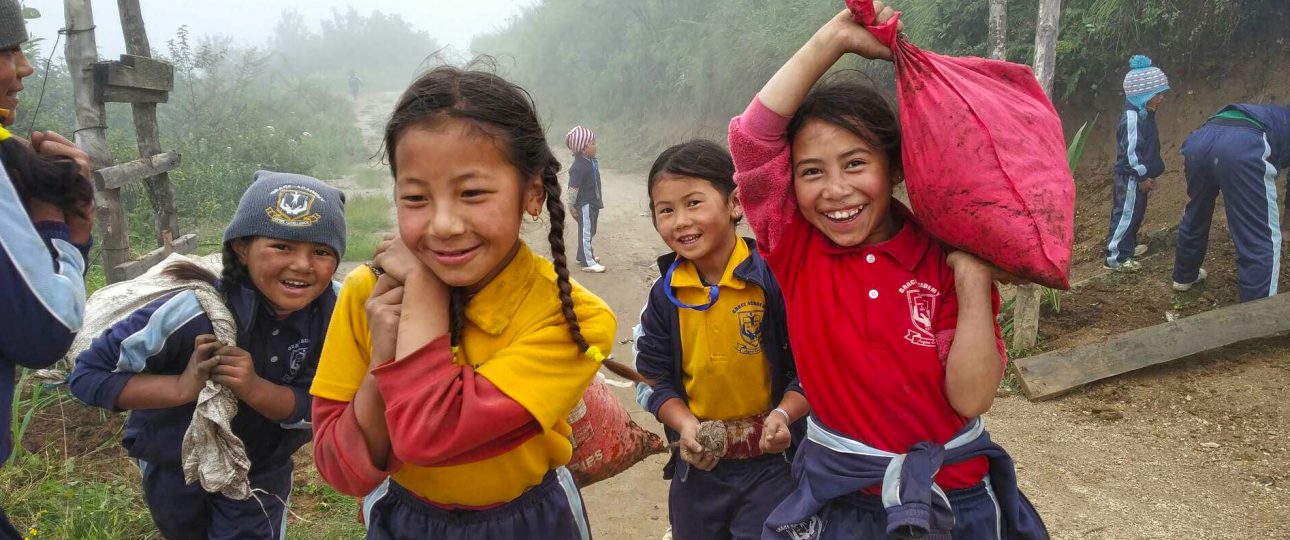Garbage and pollution control is the most important subject in today’s world. I have been working in the Himalaya for the last 21 years and have seen and experienced drastic changes in its glaciers and weather pattern. It is definitely because of the pollution that our Earth is dealing with. I neither have the expertise nor am I in a position to talk about issues in other countries, but I can share what I have experienced in our Himalaya. While education can be useful to handle this problem, I believe that the real problem lies somewhere completely different.
So here are a few points that I want to share.
Practice is more important
In urban areas in Nepal, the literacy rate in 2011 was over 85% and today it has grown much more, but it is the urban areas that are more polluted. Therefore lack of education is not the factor. Even at my parents school some 60 years ago, they had a subject called moral science in which every student had to study about how to keep the environment clean, take care of garbage, effects of pollution etc. For several decades people in this part of the world has been studying about garbage and pollution, but it is a common sight to see the window of an expensive car rolling down and empty plastic bottles and wrappers thrown out. These people are obviously well educated high ranking officers to be able to afford those expensive cars. They do understand the effects of garbage and pollution, but it is not in our culture (practice) to care about it. However, just next door in Bhutan, with a lower literacy rate, it is extremely rare sight to see littering. It is one of the cleanest countries and the only carbon negative country in the world. So basically, it comes down to culture, or to put it down a little softer we can call it practice. Only studying about garbage problem in school doesn’t help. It has to be engraved in our culture by practice.
Who is responsible for littering?
Lets get this straight- It is NOT the western tourists who litter. In my 21 years of experience as a guide, I have never seen any western tourist throwing even a small sweet wrapper. When they offer snacks to the porters, they even collect the wrappers from them because they understand that the porters will just throw them. It is we locals who litter, period!
The practice of keeping environment free of garbage must be taught to the locals.
On one incident on an expedition, I saw two porters lifting heavy rocks and hiding the garbage that had to be taken back to Namche Bazaar (The trade capital of Everest region). When I asked them why they are putting it there, they replied “but now no one will see it so where is the problem?” I had no answer, because a lecture would not help. Again it is the practice that matters because the companies are not only briefed but also are obliged by law to bring down the garbage to designated sites.
Flaws in the garbage management system
The government has taken some measures to deal with the garbage and pollution in the trekking areas, but it fails to make sense in many levels. For example, every expedition group has to pay a refundable garbage fee, which is returned when the group brings back garbage, which is a very good step indeed. When the expedition is over and the group brings back the garbage at the regional office, paper and plastic waste are weighed and collected at the office and the metals, glass, batteries etc are to be taken back to Kathmandu. After that, the group needs to pay a fuel (kerosene) charge, which is “used” to burn the paper and plastic waste. That extra kerosene which is burnt to burn the plastic, is that garbage management? really?
Lucky we have some brilliant individuals like Tommy Gustafsson who have started this brilliant “carry me back” project, which are actually small packages of these garbage that the trekkers and staff can carry back to Kathmandu. Much better than burning the plastic waste at Namche Bazaar using kerosene. These small garbage packages will then be transported to Kathmandu where Blue Waste to Value, a waste management company, take it for further recycling & up-cycling through their own processing as well as via their network of recyclrers and buyers (for reuse)
Are we looking in the right direction?
Many of my friends have amazing projects for cleaning up trails in the trekking route. It is an absolutely fantastic job and we must give full support to them, but the garbage problem in the trekking route is only the tip of the iceberg. It is like cleaning up only where people can see. Everyone’s focus are on the trekking region. Government, NGOs, INGOs, International foundations, National Parks, Conservation projects…the list goes on. Even the locals take responsibility since they are constantly refreshed about the garbage problem, which turns into a regular practice. The trekking region is only a tiny percentage of the Himalaya. The areas in the mid hill region which doesn’t lie on the trekking trails is where the main problem begins. Unfortunately, no interest is shown in these areas, neither by the government nor by the non-governmental or International foundations. The rural villages in itself were never polluted in the first place. They live on natural products which are bio degradable, so it is not important to segregate the different garbage etc, because it would be taken care of itself by nature. It is the modern products which comes in plastic that is the problem. Since they never had problem with things that would stay in the nature for 100s of years, the practice of not littering was never taken seriously. But now it is necessary to engrave this garbage management practice into the culture.
Every day, more than a hundred thousand local people travel by jeeps and buses in Nepal. During the festival time, only from Kathmandu about 1.5 million people travel out of Kathmandu by road. The windy mountain road in addition to the bad condition doesn’t make it a pleasant experience to travel by land, therefore many people get car sick and throw up. In most of these buses and jeeps, the passengers are provided with plastic bags so that they don’t dirty the car. When they throw up in the plastic bag, guess where it goes? Yes, out of the window! Assuming that 20% of the passenger used the plastic bag, we are talking about more than 100 kgs of plastic bag thrown out of the vehicles on the mountain roads every day, and during the festival time about a 1000 kg in one day!
What we need to do for a sustainable long term solution?
Cleaning up a trekking trail is a fantastic thing to do, someone has to start somewhere, but it is temporary solution rather than a sustainable long term solution to the problem! We do need to clean up trekking trails, and there are some amazing people working on that. Only during the autumn of 2019, about 3 tons of plastic and aluminium waste were collected by a waste management project called Sagarmatha Next which will be sent to Kathmandu for further recycling. There are many projects already in the trekking areas, and they are doing a great job! It is time to look in the other directions where it matters the most. We need to focus on areas which doesn’t lie on the trekking route. Most staffs who accompany the tourists do not live in the trekking region, but comes from villages which are economically poor. In the trekking areas you will find literally dozens of schools, health posts, hydroelectricity, proper walking trails, and other infra structures built by foreign aid and foundations. Also the government shows interest because they earn huge revenues from tourism from these areas. They have pollution control committee and conservation projects run by the government in these areas. Let us give some attention to the non touristic areas where the problem actually begins. After all the staff who will be working in the trekking route comes from these areas, so if we manage to teach them the practice of garbage management, the trekking trails will automatically see the difference. We will be dealing with the root cause rather than the upper crust. This will be a sustainable and long term solution. As the old proverb goes “it is hard to teach tricks to an old dog” so teaching grown-ups might not be that effective but it can be very effective if we begin at primary schools. Every village have primary schools. A “volunteer” work with a concrete plan on teaching the children the practice of garbage management will certainly make a difference. We have seen this at our school in a small village of Thade. We have had many such projects on environment such as village clean up, tree plantation, setting up different dustbins (for bio degradable and non-biodegradable waste) etc. Seeing these children in action, the adults have also become conscious.
In the end, if my message gets across some environmentalists who want to work on a project that targets the base instead of the tip of the ice berg, I would be privileged to offer my assistance to work jointly.
Tree plantation project at our school




